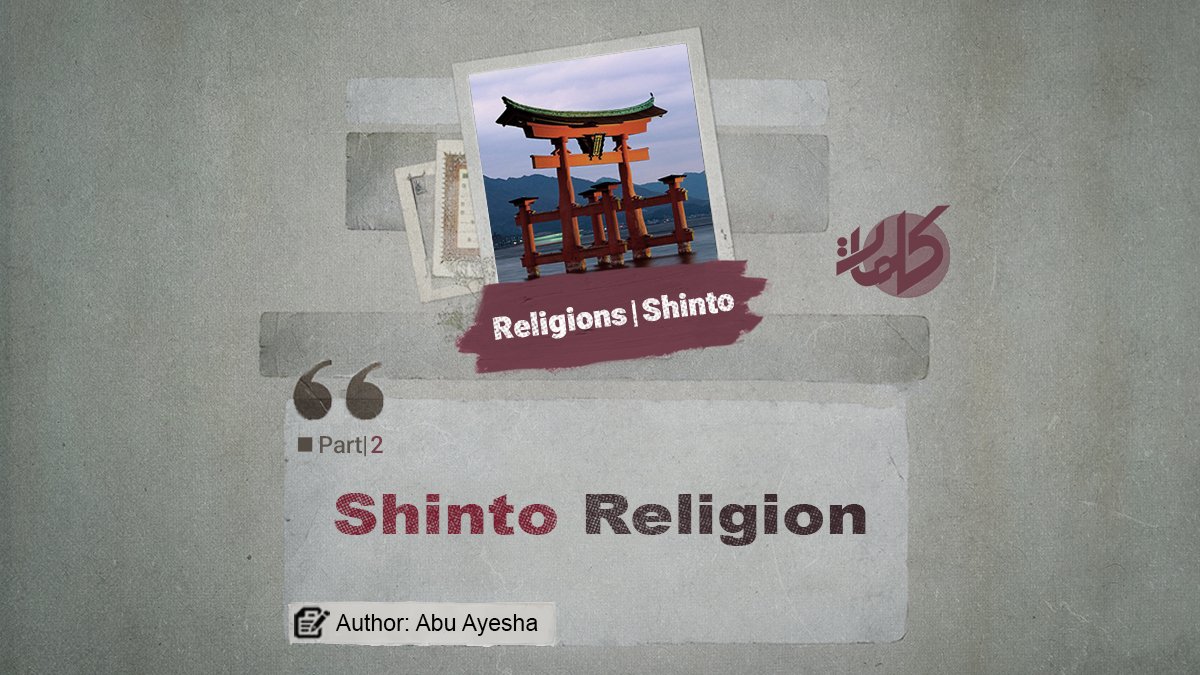
Author: Abu Ayesha
Shinto Religion (Part two)
Examination of the Term Shinto
The term Shinto is derived from two Chinese words: Shen and Tao. Shen means gods or benevolent spirits, and Tao (or Dao) means the way or path. Therefore, in total, Shinto translates to “the way of the gods.” The ancient Japanese did not originally have a name for their ethnic religion. However, after Buddhism was officially introduced to Japan from Asia via Korea and China in the 6th century CE, they used the term Shinto to distinguish their traditional religion from the foreign one.
One prominent Shinto scholar, Konosizo, defines Shinto as follows: “Shinto is the path of the kami and the fundamental principle and general creed of the Japanese people, which they have inherited since time immemorial. Shinto is also the traditional belief, sentiment, and emotion of the Japanese people.”[1]
The word Shinto, originally derived from the Chinese Shen-tao, meaning “the way of the gods,” encompasses the entire religious faith of the Japanese people in ancient times. In the myths of this people, the history and origin of the land, its people, and the emergence of the imperial family are described through fascinating legends.[2]
History of Shintoism
Shinto (Shinto) is one of the oldest and most longstanding religions in Japan. Its history stretches back centuries, and it continues to be practiced by some people in the region, who regard it as a religion, observe its rituals, and perform ceremonies according to its teachings.
“Shinto is one of the ancient religions that still exists in Japan. The term Shinto means the way to the gods. Followers of Shinto worship multiple deities called kami. They believe that kami are the fundamental forces present in mountains, seas, rocks, trees, and other components of nature.”[3]
The beliefs of the early Japanese gradually developed over time and eventually became a structured faith, helping to maintain Japan’s national unity for centuries. This faith is what we now call Shinto. Shinto is the oldest religion of Japan that has survived to the present day.[4]
Shinto, meaning “the way of the gods,” is the ancient Japanese religion that regards the sun goddess Amaterasu as the guardian of the ancestral land and considers the imperial family to be her descendants and incarnations. Around 552 CE, the social practice of Mahayana Buddhism entered Japan, and after encountering Shinto, many Buddhist elements were eventually incorporated into Shinto. Worship of national gods and the emperor, reverence and offerings for the dead, and patriotism are among the customs of this religion. [5]
Note: When humans are distant from their innate nature and the divine religion revealed by the prophets (peace be upon them), and fail to use the intellect, understanding, perception, and wisdom granted by God, they turn to worship stones, trees, mountains, rocks, and other earthly objects—even some of the basest ones. Many examples exist worldwide where people worship and submit to other humans who are powerful or influential. Shinto is one such religion that astonishes those who study it. In this faith, animals were worshiped for various reasons. For example, tigers, snakes, and wolves were considered kami due to their frightening or mysterious nature. Other animals, such as deer, donkeys, pigeons, and turtles, were venerated as helpers or attendants of the kami. Indeed, when humans are disconnected from divine law, religious teachings, and God’s commandments, they can engage in surprising acts. A person unaware of their purpose in life and of what God expects from them is truly lost.[5]
Continues…
Previous Part/ Next Part
References
[1] Shahangian, D. Nouri Sadat, Generalities on Shinto Religion (1), Rasikhon website, published 1391 SH.
[2] John Nas, Comprehensive History of Religions, translated by Ali Asghar Hekmat, 3rd edition, 1354 SH, in cooperation with Franklin Publishing Institute, p. 377. This topic will be discussed in detail in the next section.
[3] Mousa, Ibrahim Darbas, Important Sacred Places in Buddhism and Shinto: A Critical Islamic Perspective, Journal of Islamic Sciences, Issue 36, undated, p. 354.
[4] Kojiki, Shinto Sacred Text, translated by Dr. Ehsan Moghaddas, 1st edition, Winter 1380 SH, p. 16.
[5] Tofighi, Hossein, Introduction to Major Religions, undated, published by the Global Islamic Sciences Center, p. 36.


